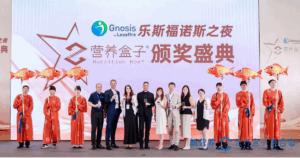
WCO-IOF-ESCEO poster presentation highlights implications of correcting vitamin K2 deficiency on children’s bone health.
A poster presented at The World Congress on Osteoporosis, Osteoarthritis, and Musculoskeletal Diseases, the world’s leading clinical conference on bone, joint, and muscle health, detailed recent research showing that low vitamin K status correlated with increased fracture risk in children.
The scientific program, developed by the Committee of Scientific Advisors of the International Osteoporosis Foundation (IOF) and the Scientific Advisory Board of the European Society for Clinical and Economic Aspects of Osteoporosis and Osteoarthritis (ESCEO), brought together the world’s best in the field of musculoskeletal health and disease from April 19-22, 2018 in Krakow, Poland. According to IOF and ESCEO, program’s intention is to “move the field forward on all fronts; from new understanding of bone metabolism and pathology, to new strategies and options in prevention, diagnosis, and treatment.”
The poster, “Roles of Vitamins D and K, Nutrition, and Lifestyle in Low-Energy Bone Fractures in Children and Young Adults”, was presented to this prestigious audience by authors Dr. Michael Karpinski from Medical School in Białystok and Dr. Katarzyna Maresz, president of the International Science and Health Foundation. According to Dr. Maresz, theirs was the only presentation that addressed the bone health benefits of Vitamin K.
Vitamin K impact on bone health
“The main conclusion of our study was the tremendous impact Vitamin K has on bone health, in particular how Vitamin K2 deficiency seriously affects fracture risks of children,” says Dr. Maresz, whose group created VitaminK2.org. “While many presented studies on Vitamin D, ours was the only paper/poster that addressed both Vitamins K and D, two complementary nutrients for supporting bone health.
“Making these important nutrients part of the conversation with the medical community shows how the potential of future bone therapies could be positively impacted,” adds Maresz.
“The implications of Vitamin K2 being part of this important conference are immeasurable,” says Dr. Hogne Vik, chief medical officer at ex-NattoPharma. “One of the main hurdles is that there is still no RDI established for Vitamin K2. Having K2 discussed at this conference from a bone-health perspective, while the medical community is also initiating studies to examine K2 as a potential cardiovascular therapy, shows we are making strides in overcoming that hurdle.
“It also cannot be overstated the importance of every possible opportunity to advance industry and academic understanding of this essential nutrient,” Vik concludes. “The findings presented by Drs Karpinski and Maresz are so very significant, as they provide supporting evidence to the clinical research NattoPharma has already spearheaded. Not only has our research identified children as a group most deficient in Vitamin K2, but that just 45mcg of K2 (as ex-NattoPharma’s MenaQ7®) daily improves K status and increases the activation of osteocalcin, the K-dependent protein responsible for binding calcium to the bone mineral matrix, therefore improving bone health.”
DISCOVER ALL OUR LATEST NEWS

Webinar Rethinking Women’s Health 24 June 2025
Women’s health is complex, constantly evolving, and a broader perspective is long overdue, one that goes beyond reproductive care to include mental health, chronic conditions, and the unique ways diseases manifest in women.

Gnosis by Lesaffre Highlights Quatrefolic® at New Nutrition Forum in Hangzhou, China
Gnosis by Lesaffre was proud to serve as the Title Sponsor of the New Nutrition Forum held in Hangzhou on June 6, 2025. As part of the event’s scientific agenda, we hosted an engaging seminar focused on Quatrefolic®, the 4th generation active folate.

Biotic Live: A Successful First Edition Exploring the Power of Probiotic Yeasts
Gnosis by Lesaffre recently hosted the first edition of Biotic Live, a unique event dedicated to exploring the potential of probiotic yeasts. This live session brought together leading experts to present the latest scientific insights and real-world applications of live yeasts in human health.


